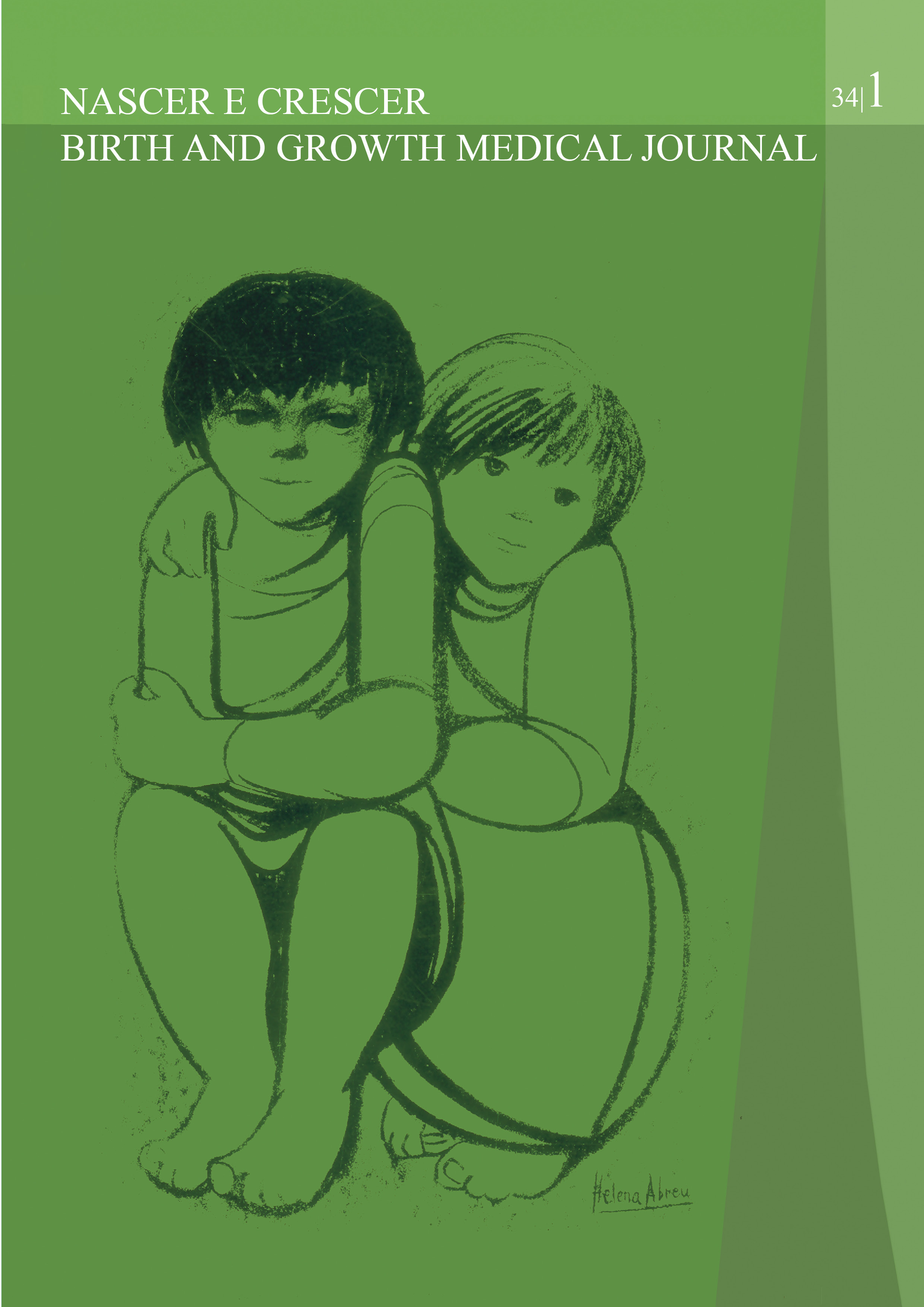Wait-and-see approach in a paediatric patient with Neuroblastoma with Metastatic Disease
DOI:
https://doi.org/10.25753/BirthGrowthMJ.v34.i1.33107Keywords:
adrenal gland, hepatomegaly, neuroblastoma, wait-and-see approachAbstract
Neuroblastoma is the most common extracranial solid tumour in the paediatric population, accounting for approximately 8-10% of all childhood cancers. It arises from the abnormal proliferation of embryonic neural crest cells which normally give rise to the sympathetic nervous system (SNS) and the adrenal gland medulla. Its prognosis is uniquely heterogeneous, with some children experiencing spontaneous regression, while others develop widespread metastatic disease with poor outcomes despite aggressive multimodal therapy. Treatment choice dependents on risk stratification based on the patient’s age at diagnosis and tumour characteristics, such as stage and biological features.
We describe the case of an infant who presents with hepatic metastasis secondary to a solid tumour in the left adrenal gland, classified as stage MS according to the INRGSS classification. A wait-and-see approach was adopted, with clinical, analytic and radiologic surveillance, verifying spontaneous regression of the tumour afterwards.
Downloads
References
Sharma R, Mer J, Lion A, Vik TA. Clinical Presentation, Evaluation, and Management of Neuroblastoma. Peds in Review. 2018;39(4):194-203. https://doi:10.1542/pir.2017-0087.
Whittle SB, Smith V, Doherty E, Zhao S, McCarty S, Zage PE. Overview and recent advances in the treatment of neuroblastoma. Expert Rev Anticancer Ther. 2017;17(4):369-86. https://doi:10.1080/14737140.2017.1285230.
Ishola TA, Chung DH. Neuroblastoma. Surg Oncol. 2007; 16(3):149-156. https://doi:10.1016/j.suronc.2007.09.005.
Ahmed AA, Zhang L, Reddivalla N, Hetherington M. Neuroblastoma in children: Update on clinicopathologic and genetic prognostic factors. Pediatr Hematol Oncol. 2017;34(3):165-85. https://doi:10.1080/08880018.2017.1330375.
Monclair T, Brodeur GM, Ambros PF, Brisse HJ, Cecchetto G, Holmes K, et al. The International Neuroblastoma Risk Group (INRG) Staging System: An INRG Task Force Report. J Clin Oncol. 2009;27(2):298-303. https://doi:10.1200/JCO.2008.16.6876.
Pinto NR, Applebaum MA, Volchenbaum SL, Matthay KK, London WB, Ambros PF, et al. Advances in Risk Classification and Treatment Strategies for Neuroblastoma. J Clin Oncol. 2015;33(27):3008-18. https://doi:10.1200/JCO.2014.59.4648.
Bansal D, Totadri S, Chinnaswamy G, Agarwala S, Vora T, Arora B, et al. Management of Neuroblastoma: ICMR Consensus Document. Indian J Pediatr. 2017;84(6):446-455. https://doi:10.1007/s12098-017-2298-0.
Brodeur GM. Spontaneous regression of neuroblastoma. Cell Tissue Res. 2018;372(2):277–86. https://doi:10.1007/s00441-017-2761-2.
Bhatnagar SN, Sarin YK. Neuroblastoma: A Review of Management and Outcome. Indian J Pediatr. 2012; 79(6):787-92. https://doi:10.1007/s12098-012-0748-2.
Louis CU, Shohet JM. Neuroblastoma: Molecular Pathogenesis and Therapy. Annu Rev Med. 2015;66:49-63. https://doi:10.1146/annurev-med-011514-023121.
Lastowska M, Cullinane C, Variend S, Cotterill S, Bown N, O'Neill S, et al. A comprehensive genetic and histopathologic study reveals three types of neuroblastoma tumours. J Clin Oncol. 2001 Jun 15;19(12):3080-90.
“Localized Infant Neuroblastomas Often Show Spontaneous Regression: Results of the Prospective Trials NB95-S and NB97”, J Clin Oncol. 2008;26(9):1504-10.
De Bernardi B, Mosseri V, Rubie H, et al. Treatment of localised resectable neuroblastoma: results of the LNESG1 study by the SIOP Europe Neuroblastoma Group. Br J Cancer 2008;99(7):1027–33.
Downloads
Published
How to Cite
Issue
Section
License
Copyright (c) 2025 Biana Moreira, Ana Foles, Diana Silva, Pierre Gonçalves

This work is licensed under a Creative Commons Attribution-NonCommercial 4.0 International License.
Copyright and Authors' Rights
All articles published in Nascer e Crescer - Birth and Growth Medical Journal are Open Access and comply with the requirements of funding agencies or academic institutions. For use by third parties, Nascer e Crescer - Birth and Growth Medical Journal adheres to the terms of the Creative Commons License "Attribution - Non-Commercial Use (CC-BY-NC)".
It is the author's responsibility to obtain permission to reproduce figures, tables, etc. from other publications.
Authors must submit a Conflict of Interest statement and an Authorship Form with the submission of the article. An e-mail will be sent to the corresponding author confirming receipt of the manuscript.
Authors are permitted to make their articles available in repositories at their home institutions, provided that they always indicate where the articles were published and adhere to the terms of the Creative Commons license.


